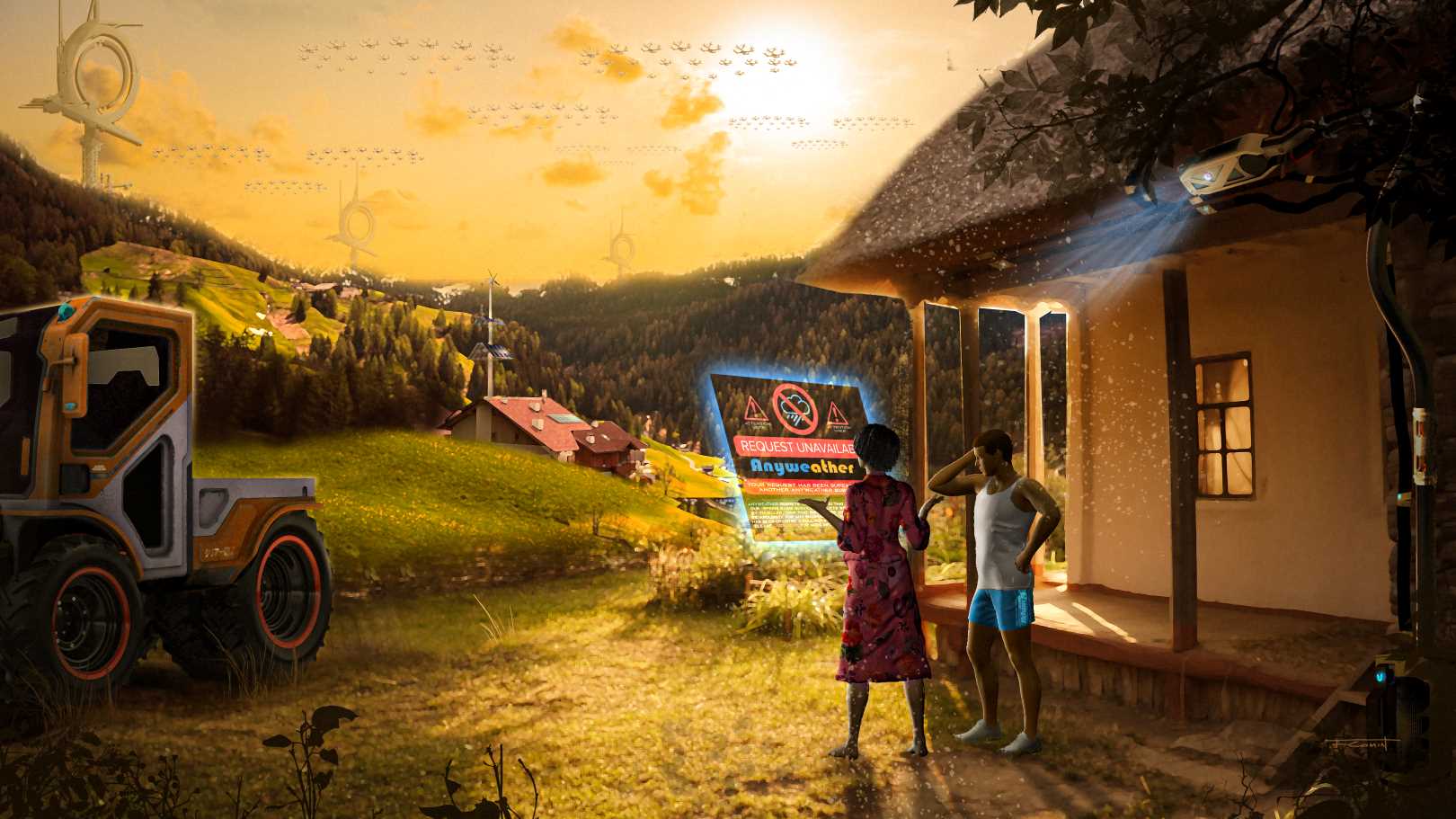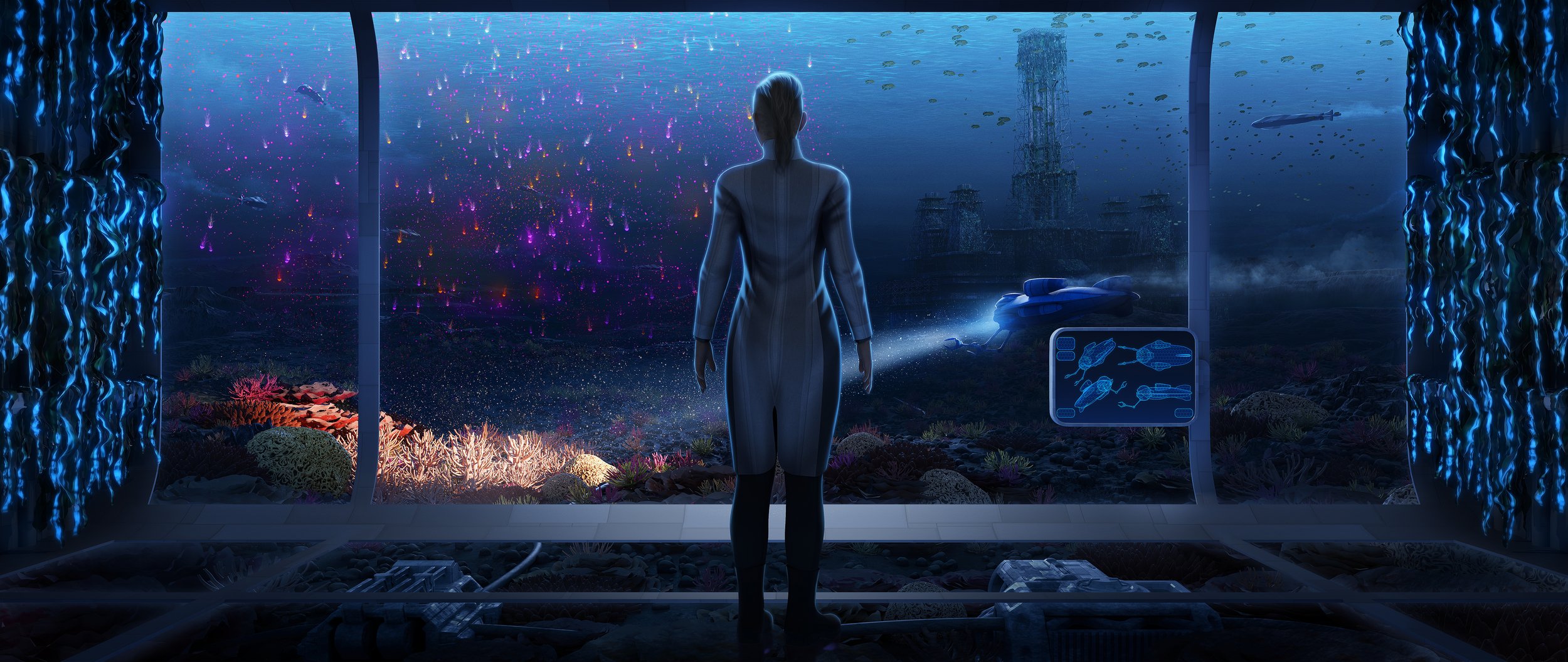Water futures
Researchers envision sci-fi worlds involving changes to atmospheric water cycle

An artist generated image illustrating possible futures in policy and research due to human modifications of the atmospheric water cycle. Credit: Fabio Comin & Patrick Keys.
A new study used science fiction to imagine how atmospheric water flows might look in the future
- Water scientists from around the globe to wrote story-based scenarios about the possible futures humanity is facing
- The goal was to better describe the ways humans and institutions may interact with the atmospheric water cycle in the future
- The result was an exercise in science fiction storytelling with the specific goal of probing reality and envisioning even the weirdest possible outcomes
THE DRY SKY: Human activity is changing the way water flows between the Earth and atmosphere in complex ways and with likely long-lasting consequences that are hard to picture.
Land use change is altering where clouds form and how precipitation is distributed. Meanwhile, weather modification activities like cloud seeding are shifting how nations plan for water use in the face of climate change. These and other changes to the planet’s atmospheric water cycle were once hard to imagine but are increasingly part of modern water management on the planet.
To better grasp how those kinds of activities could shape the world, a group of researchers including Centre researchers Lan Wang-Erlandsson, Michele-Lee Moore, Agnes Pranindita, and Carl Folke enlisted water scientists from around the globe to write story-based scenarios about the possible futures humanity is facing but perhaps can’t quite comprehend yet. The results were recently published in the journal Global Sustainability as part of a creative pathway to understand atmospheric water research with an eye towards the potential economic and policy issues that may be just beyond the horizon.
Science fiction narratives
The work features striking artist-made images that pair with traditional science fiction narratives as well as alternative story forms like first-person journal entries. The article’s lead author and former Centre researcher Patrick Keys, now at the Colorado State University, said the package offers a wide path – grounded in science – to build a shared understanding of future water management activities and problems.
“Stories are everywhere and are an integral part of human life,” he said. “They tell you something different from a graph in a research paper. They allow you to explore how people may feel or react to these kinds of changes. This kind of work provides agency for people and an opportunity to consider these changes no matter their background or level of understanding.”
Stories are everywhere and are an integral part of human life.
Patrick Keys, Colorado State University
Research for this work came in three distinct phases, according to Keys. First, the research team used computational text analysis to find recurring themes in journal abstracts about the current state of atmospheric water cycle research. They then sorted the data – identifying clusters of recurring terms against a grid of common economic goods principles for discussion. The goal was to better describe the ways humans and institutions may interact with the atmospheric water cycle in the future. Specifically: how entities in the future, such as countries or private actors, could eventually act to protect their own resources or how they may leverage advantages to gain access to water as a crucial natural resource in the future.
It’s those relationships and interactions that were explored in the third part of this research and where science fiction comes into play.

An artist generated image illustrating possible futures in policy and research due to human modifications of the atmospheric water cycle. Credit: Fabio Comin & Patrick Keys.
Looking beyond 2050
With a better grip on the potential future relationships of water management in this space, Keys next asked experts to imagine a world that is decades in the future where activities like cloud seeding were common and the long-term results are more apparent.
The extent of how we humans change the water cycle is hard to imagine. Using creative approaches can help us get a better understanding of what possible futures might look like.
Centre researcher Lan Wang-Erlandsson
The result was an exercise in science fiction storytelling with the specific goal of probing reality and envisioning even the weirdest possible outcomes.
“The extent of how we humans change the water cycle is hard to imagine. Using creative approaches can help us get a better understanding of what possible futures might look like,” says Lan Wang-Erlandsson.
To create the narratives the research team hosted a series of workshops with interdisciplinary water experts from all fields and backgrounds and walked them through a ‘futures thinking’ approach. The experts were not siloed by discipline and topic during the exercise, with the hope of sparking even more creativity. In the end, 10 story-based scenarios were developed and are included in the paper. They also worked with the artist Fabio Comin over the course of a year to create the accompanying imagery.
Keys, P.W., Wang-Erlandsson, L., Moore, M.-L., Pranindita, A., Stenzel, F., Varis, O., Warrier, R., Bong, R.B., D'Odorico, P. & Folke, C. 2024. The dry sky: future scenarios for humanity's modification of the atmospheric water cycle. Global Sustainability.








